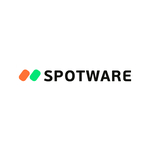US Payments Forum Market Snapshot: Continued Contactless Growth, Buy Now Pay Later Takes Hold and Chip Supply Challenge Persists
ENGLEWOOD, Colo., Dec. 15, 2021 (GLOBE NEWSWIRE) — The U.S. Payments Forum today released its latest Market Snapshot. It provides an overview of the state of the industry, including consistent growth in contactless payments, ‘buy now pay later’ and mobile wallet transactions, and the pandemic-driven shift toward e-commerce. The snapshot also offers clarity from Forum members regarding ongoing chip supply challenges, the 8-digit BIN migration, EMV L3 considerations, and current Forum priorities and projects.
“The pandemic ushered in an unprecedented acceleration of changes in the payments industry, and there is no putting the genie back in the bottle,” said Jason Bohrer, director of the U.S. Payments Forum. “U.S. contactless payments have doubled year-over-year, e-commerce is booming and mobile and online transactions have become essential for retailers. But there is still much to be done ahead of us in areas like online fraud prevention, navigating the chip shortage and opportunities being created by the new standard for mobile drivers’ licenses, all of which created an exciting and active fall meeting for our members.”
State of the Market: Contactless is here to stay, consumers embrace emerging payment methods
The COVID-19 pandemic has had an undeniable influence on consumer payment preferences. Contactless transactions and omnichannel shopping experiences are growing in popularity with no sign of slowing down, according to cross-industry stakeholders. Payments leaders agree about the importance of digital and touchless functionalities in the industry’s future.
One major banking company which provides financial services both inside and outside of the U.S. clearly illustrates the behavioral shift toward contactless payments. The issuer reports 70% penetration for contactless solutions to date, and a considerable 22% year-over-year (YOY) growth in digital wallets.
Payment networks are also reporting significant progress in the contactless space. Mastercard is seeing twice the volume for contactless transactions compared to the end of last year. Meanwhile, Discover reports triple digit growth in contactless sales volume, with 249% YOY growth globally. American Express reports a change in sentiment around touchless payments over the past year. Research shows 35% of U.S. consumers say they are more likely to use contactless payments for in-store purchases now than pre-pandemic and 39% are more likely to use a digital wallet or merchant app.
Brian Byrne, director of engagement and operations at EMVCo, who delivered the keynote address at the Forum’s fall member meeting, offers additional statistics on the evolution of payments post-pandemic. Referencing a 2021 Report by Worldpay Global, Byrne noted that digital sales in the U.S. rose 9.3% to $211.70 billion in the second quarter of this year and that mobile wallets are projected to account for 33% of global point of sale (POS) transactions by 2024.
Another noteworthy change taking hold in the payments space is the resurgence of debit transactions. Some industry stakeholders attribute this to pandemic stimulus checks boosting disposable income in the U.S. According to PULSE’s debit issuer study, there was more debit volume than credit volume for the first time in 16 years.
As the new year approaches, it’s evident that consumers are not only continuing to adapt their payment habits, but also their shopping preferences. E-commerce surged in popularity over the course of the pandemic and most merchants, issuers and payments networks expect the uptick to persist. The payment network SHAZAM is reporting a significant increase YOY for e-commerce, compared to all other payment channels. On the merchant side, restaurant chain Wendy’s reports notable digital growth in its third quarter, reaching a roughly 8.5% mix globally. The change, which is ahead of the company’s original pre-pandemic projections, was driven by gains in mobile ordering and delivery.
In the seven months since the EMV liability shift for the petroleum industry took effect, there have been both great successes and challenges. Discover experienced 73% EMV transaction volume at the pump, more than double what was observed in 2020 at year’s end. There is concern, however, that the ongoing chip supply shortage is impacting the re-terminalization needed to achieve EMV compliance. A related concern is that many merchants, notably in the retail petroleum sector, implemented contactless payment using magnetic stripe data (MSD) on the chip, instead of full EMV contactless transactions. While this exception was allowed to help speed the rollout of pay-at-the-pump EMV, the consensus among payment networks is that MSD must be phased out for security purposes. As those deadlines approach, stakeholders are actively discussing options given the barriers to re-terminalization.
Trending Topics: Banding together amid enduring chip shortage, fraud concerns, BNPL booming
Semiconductors remain in short supply worldwide, forcing the payments industry and many others to take a proactive approach when managing their chip quantities. The shortage amounts to 420 million chips this year, according to ABI Research, and that number is expected to surge to an 806 million chip shortfall in 2022.
Several factors escalated the chip supply shortage, including a spike in demand for personal electronics driven by working from home, supply chain disruptions during the pandemic and the rapidly growing needs of automobile manufacturers for chips as the industry recovers. As of July, there has already been a 10% overall drop in POS implementation because of the shortage, according to a recent industry publication cited by Verifone.
Chip supply challenges are expected to persist into 2023. Forum members from across the payments landscape are leveraging their individual experiences to develop recommendations for staying ahead of this ongoing challenge. A panel that included payment networks and semiconductor, chip card and terminal technology providers agreed upon the following best practices:
- Maintain an open line of communication with vendors and provide accurate, long-range forecasts
- Try to have three to six months’ worth of inventory and order chips ahead of schedule. Flexibility is key
- For contact-only products, consider migrating to dual interface chips, which are more likely to be available as foundries optimize production around larger, more profitable products
- Avoid marketing programs or new branding initiatives that require re-issuance
On this last point, ICBA Bancard cited industry research which finds that nearly 23% of accounts payable professionals want to integrate virtual cards into their broader B2B operations.
Account takeover and card-not-present fraud are also top of mind in the payments sector. The rise in e-commerce transactions provides an avenue for CNP fraudsters to increase their malicious activities. Many presenters agreed that EMV 3D Secure has served as an effective shield against fraud by establishing a secure connection between the customer and the identifying bank to verify identification prior to completing transactions. With Visa Secure with EMV 3DS transactions, a 35% decrease in fraud was observed during a 12-month period.
Although account takeover (ATO) is not new, the pace has changed over the past year alongside the mass consumer migration toward online shopping experiences. Customers are creating accounts on e-commerce websites and mobile banking apps and fraudsters are gaining access to those accounts. A panel that included payment networks, issuers, merchants and fraud mitigation solution providers gave feedback on some of the key identifiers associated with ATO:
- Ordering debit or credit cards right after making an address change on the account
- Unusual peer-to-peer transaction volumes
- IP sessions routing internationally instead of domestically
- Frequent log ins and log outs
Buy now pay later (BNPL) and peer-to-peer transactions are also trending, gaining the most visibility among pandemic-driven emerging payment methods. NYCE cited multiple industry sources which estimate peer-to-peer transaction volume will reach $900 billion by the end of the year. BNPL transaction volume is expected to reach $100 billion in that same time frame.
Forum Priorities: EMV L3 awareness and the 8-digit BIN migration
The U.S. Payments Forum’s mission is to encourage broad cooperation and coordination across the payments industry. In the coming months, stakeholders will face two important challenges: the 8-digit BIN migration and EMV Level 3 (L3) certification and testing implementation. The Forum seeks to arm the industry with the education it needs to navigate these challenges as seamlessly as possible.
All stakeholders in the payments industry should be prepared to support both 6- and 8-digit BINs effective April 2022. Each payments network has developed operating rules and requirements which detail the impacts, financial implications and any necessary updates.
The Forum will soon publish a white paper on 8-digit BIN with aims to:
- Summarize payment network requirements
- Develop solutions to perceived migration challenges
- Raise awareness surrounding the significance of 8-digit BINs in maximizing efficiency
- Encryption considerations
EMV L3 testing and certification challenges are also at the forefront of the Forum’s priorities. The Forum is taking steps to ensure industry-wide awareness and understanding during the L3 certification process, which aims to validate the integration of an EMV-equipped terminal with merchant or bank systems to ensure end-to-end transaction acceptance. Moving forward, EMV L3 seeks to provide a consistent testing approach across brands and facilitate similar approaches by all test tool vendors. The goal is to benefit users, participants, merchants and vendors by streamlining the testing process. Those interested in learning more are encouraged to download “Intake Form Terminology for EMV Level 3 POS Certification”, a resource developed by the Forum to aid in accurately and efficiently completing the L3 intake forms.
The Forum has numerous projects currently underway that will benefit stakeholders throughout the payments ecosystem, including:
- A podcast detailing best practices for contactless commerce at the POS and ATM
- An extensive white paper on device authentication and consumer verification techniques for mobile in-app and remote payments
- A white paper addressing the global chip shortage sponsored by the Forum’s Steering Committee
Resource Recap
The U.S. Payments Forum has recently published the following resources:
- Card-on-File Tokenization Considerations: a resource providing an overview of different card-on-file tokenization options and stakeholder deliberations for each, including debit routing
- Payments Resource Brief: Data Integrity Fraud, a first-of-its-kind resource on fraud topics by the Forum Payments Fraud Working Committee [members only]
Organizations, associations, government agencies and individuals interested in participating in upcoming projects and initiatives can visit the Forum website to learn about how to become a member. For membership levels, benefits and the application, visit http://www.uspaymentsforum.org/membership/membership-benefits/.
About the U.S. Payments Forum
The U.S. Payments Forum is a cross-industry body focused on supporting the introduction and implementation of new and emerging technologies that protect the security of, and enhance opportunities for payment transactions within the U.S. The Forum is the only non-profit organization whose membership includes the whole payments ecosystem, ensuring that all stakeholders have the opportunity to coordinate, cooperate on, and have a voice in the future of the U.S. payments industry.
Contact
Mike Smith
Montner Tech PR
203-226-9290
[email protected]





































